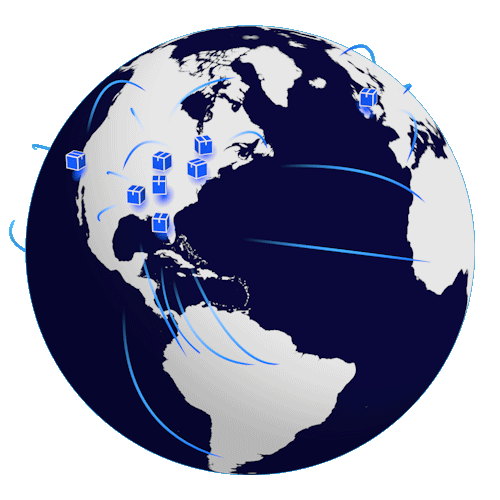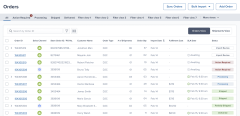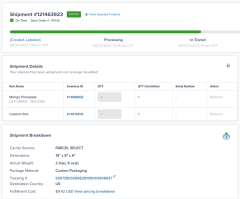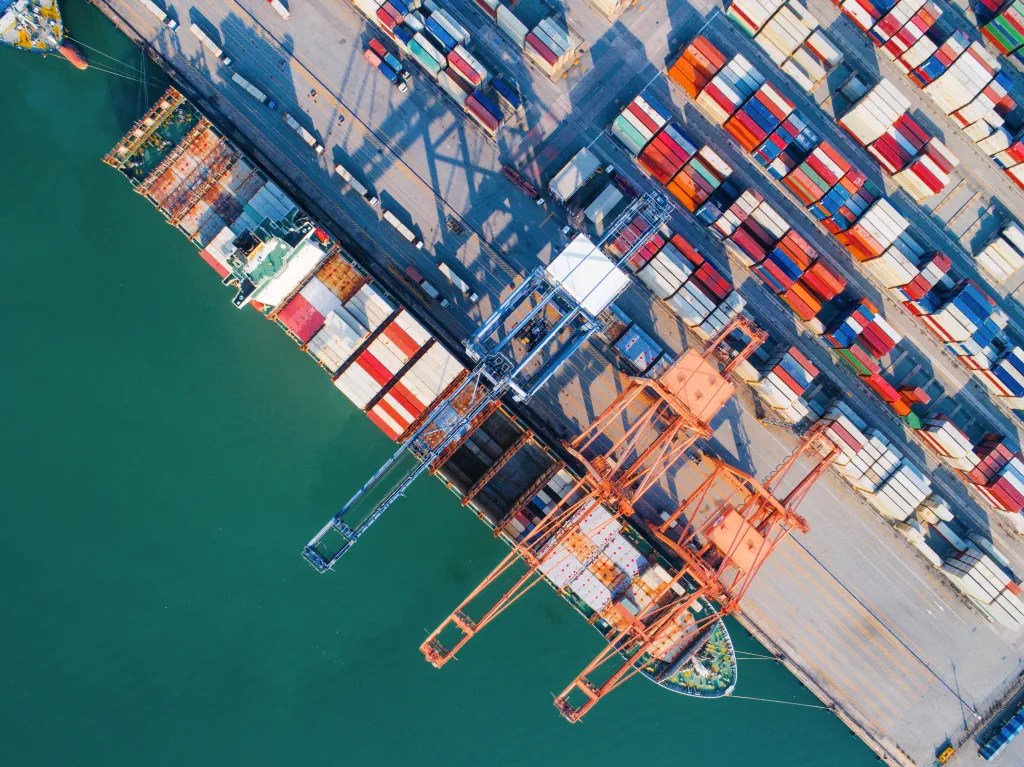Table of Contents
** Minutes
What is a consignee in shipping?
The importance of consignees in ecommerce
What’s the difference between the consignee and consignor?
For ecommerce businesses, getting familiar with the key players in the shipping process is vital to keeping orders on track. One of these important roles is the consignee—the person or business responsible for receiving the goods at their final destination.
This article explains what a consignee is, their responsibilities, and how modern logistics companies fit in to make managing this role easier and more efficient.
What is a consignee in shipping?
In shipping, the consignee is the final recipient of the goods in the logistics chain, whether it’s a customer ordering from an online store, a business receiving bulk inventory, or a partner managing consignment inventory. The consignee’s role is crucial—they are the endpoint of a process that starts with the consignor (the shipper) and involves multiple intermediaries like shipping companies and distribution centres.
Responsibilities of a consignee
The consignee’s responsibilities vary depending on the shipping context but generally include the following:
- Receiving the goods: The consignee ensures the shipment arrives in good condition and matches the order details.
- Import duties and taxes: For international shipments, consignees often handle customs fees and ensure compliance with regulations.
- Verifying shipment accuracy: They check that the goods received match the BOL (bill of lading), shipping labels, and purchase order, addressing any discrepancies.
- Storage or usage: In a B2B context, the consignee might integrate the goods into their inventory strategy, while in B2C scenarios, the consignee uses or consumes the product.
B2B consignees play a critical role in maintaining the integrity of the supply chain. Their responsibilities often tie into processes like demand forecasting, helping businesses anticipate future inventory needs, minimising overstocking, and ensuring warehouse capacity is used effectively.
Who can be a consignee? (Examples)
A consignee can be an individual, a business, or even a third-party recipient, depending on the shipping context. Here’s a look at how consignees function in both domestic and international scenarios.
Domestic shipping example
Sarah, a UK. shopper, orders sneakers online and provides her home address as the delivery destination, making her the consignee. The retailer ships the shoes from a nearby dynamic storage facility for fast delivery, and Sarah completes the transaction as the final recipient.
International shipping example
Now image, a boutique in France orders 500 ceramic vases from a UK. supplier, acting as the consignee. They handle customs duties and import compliance, and after clearing customs, the shipment is delivered, inspected, and added to their inventory.
Third-party recipients as consignees
In some cases, the consignee isn’t the end purchaser. For instance:
- A business may ship inventory to a 3PL acting as the consignee, where it’s stored and managed for future orders.
- A gift recipient could be the consignee in a B2C ecommerce transaction.
The importance of consignees in ecommerce
For ecommerce businesses, having a strong relationship with B2B consignees, whether a 3PL, on-demand warehouse, or retailer, ensures inventory is handled properly and delivered to customers on time.
The consignee’s role in order fulfilment
Let’s say you run an ecommerce business and partner with a 3PL, like ShipBob, to store inventory and fulfil your orders. In this case, the 3PL acts as the consignee, receiving bulk inventory in shipper-owned containers (SOCs), carrier-owned containers (COCs), or other large shipment packaging. From there, the 3PL begins the process of unloading, organising, and preparing the inventory for storage and eventual fulfilment.
But a 3PL’s responsibilities don’t stop there. They may need to split shipments or consolidate orders to satisfy certain shipping requirements or to reduce costs. They may also be responsible for kitting or repackaging orders in custom-branded boxes. All of these steps are part of ensuring a smooth and reliable ecommerce warehousing and order fulfilment process.
Impact on customer experience
A B2B consignee managing your inventory and orders can greatly impact your ecommerce business. Delays or damaged goods can harm your reputation, while timely, well-packaged deliveries leave a lasting positive impression. ShipBob for instance, helps enhance the customer experience with features like real-time tracking for updates, custom packaging for memorable unboxing experiences, and reliable shipping practices to reduce delivery issues.
Challenges businesses face when delivering to consignees
Delivering to consignees around the globe can come with its fair share of challenges, even with well-planned systems. This includes:
- Failed deliveries: Incorrect addresses or unavailable recipients can cause delays or lost shipments.
- Customs issues: Unexpected fees, incorrect documentation, or customs delays can frustrate consignees.
- Customer expectations: Customers expect fast, accurate deliveries, pushing businesses to balance speed and quality.
What’s the difference between the consignee and consignor?
The consignee and consignor each have a unique role in getting goods from their starting point to their final destination. Their responsibilities work together to make sure the shipment is delivered successfully.
Who is a consignor?
The consignor is the originator of the shipment—typically the seller, supplier, or manufacturer. Their primary responsibilities include:
- Preparing the shipment for transport, including packaging and labelling.
- Creating accurate shipping documents.
- Dispatching the goods through a shipping carrier or logistics provider.
Key differences and interactions
Although both need to work together to complete a shipment, their roles and responsibilities are quite different:
Role in the logistics chain:
- The consignor initiates the shipment by sending the goods.
- The consignee is responsible for receiving the goods.
Responsibilities:
- The consignor ensures the shipment is properly prepared and dispatched.
- The consignee accepts the delivery and verifies the condition of the goods.
Interactions:
- They collaborate indirectly through the logistics provider to move goods from the seller to the buyer.
- Effective communication and accurate documentation ensure smooth handoffs and delivery.
Why the distinction is important in shipping documentation
Getting the roles of consignor and consignee right is key to creating accurate shipping documents like shipping labels, invoices, and bills of lading. Clear information helps avoid mix-ups, delays, or even lost goods while making sure responsibilities are well-defined at every step.
How ShipBob improves the consignee experience
ShipBob leverages advanced technology and a robust logistics network to streamline the consignee experience. By addressing key pain points such as cross-border issues, tracking transparency, and packaging personalisation, ShipBob makes sure every consignee experiences a hassle-free delivery process.
Cross-border shipping made simple for all

International shipping can be complex, with regulations, fees, and duties causing stress for businesses and delays for consignees. ShipBob streamlines the process by offering DDP shipments, international shipping discounts, and overseas fulfilment capabilities so consignees receive their orders quickly and hassle-free.
Industry-leading order management system

ShipBob’s powerful order management system (OMS) takes the guesswork out of shipping and fulfilment. With features like automated order processing and detailed reporting, our OMS ensures smooth operations and accurate tracking at every stage. By providing businesses with the right tools, ShipBob empowers merchants to manage inventory efficiently, reduce errors, and keep consignees happy.
Real-time tracking for consignees

Transparency is key to a positive shipping experience, and ShipBob’s real-time ecommerce order tracking offers just that. Consignees can monitor their shipment’s journey, from the moment it leaves the warehouse to its arrival at their doorstep. With proactive notifications for delivery updates or delays, ShipBob reduces the anxiety of waiting and provides a sense of control.
Custom packaging options for an elevated consignee experience

Delivery isn’t just about getting products from point A to point B—it’s also an opportunity to delight your consignees. ShipBob offers custom packaging solutions, allowing you to create a memorable unboxing experience. Branded boxes, personalised notes, and thoughtful inserts make consignees feel valued and enhance the perceived value of your products.
Start shipping with ShipBob
Interested in learning more about partnering with ShipBob for order fulfilment? Request a quote to get started.
Shipping consignee FAQs
Here are answers to commonly asked questions about consignee shipping.
What is the notify party?
The notify party is an additional contact listed on shipping documents to receive updates about the shipment’s status, such as arrival notifications or delivery schedules.
What happens if the consignee is unavailable?
If the consignee isn’t available to receive the shipment, the logistics provider may hold the package at a facility, arrange for a redelivery, or return it to the sender, depending on the shipping agreement.
What information is needed for a consignee?
You’ll need to provide accurate details like the consignee’s full name, delivery address, and phone number to ensure smooth delivery.
Is the consignee the buyer or receiver?
The consignee is usually the person or entity receiving the goods, which may or may not be the same as the buyer.
Is the consignee the same as the delivery address?
Yes, in most cases, the consignee’s address is used as the delivery address. However, they can be different if special instructions are provided.



